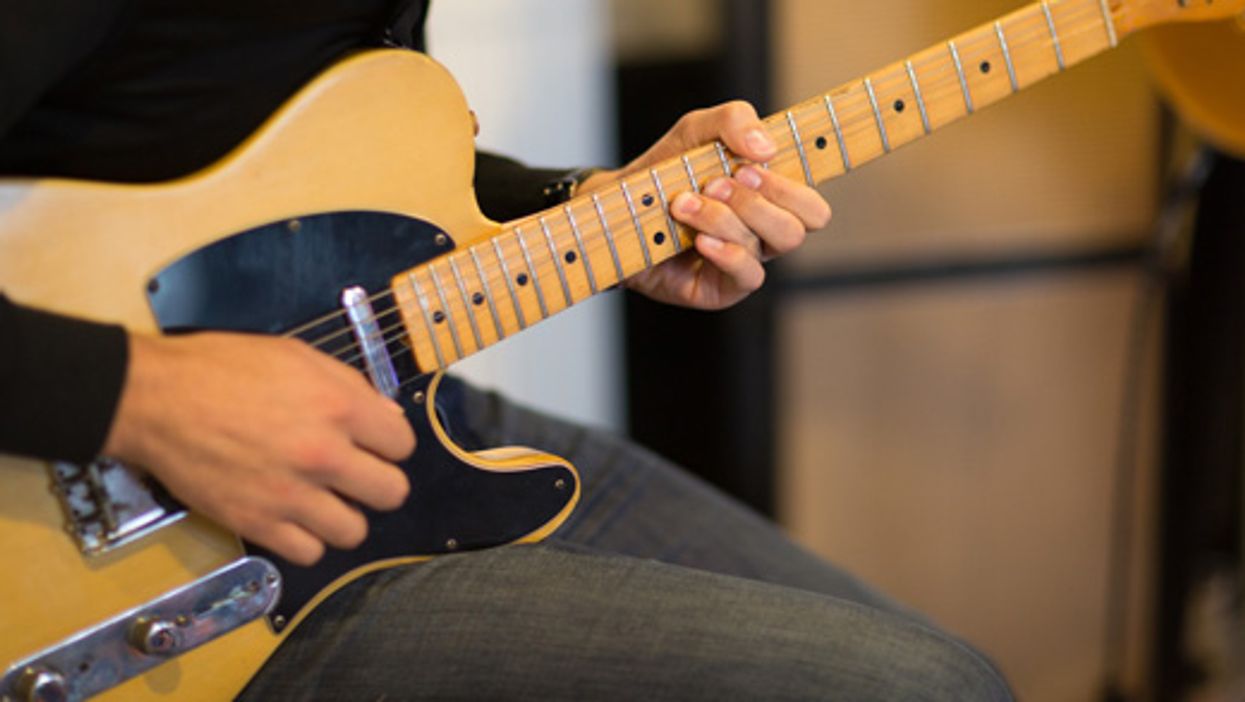One of the most important aspects of improvisation, at least for me, is the ability to steadily deliver a stream of 16th notes (four notes per beat) containing interesting and somewhat unpredictable lines within the context of mid- to high-tempo music scenarios. Playing 16th notes at a typical mid-tempo speed such as 120 bpm is not necessarily a difficult task for many guitarists, however to do so in a manner that doesn’t rely on the use of overly predictable sequences or pre-rehearsed licks can often prove to be a bit more challenging.
One of the methods I’ve found to be very helpful in assisting with this quest is displacing the accents in these sets of fours, resulting in a particular kind of polyrhythm. The various official definitions of the word usually include language that goes something like, “the simultaneous sounding of two or more independent rhythms.” If this concept were new to me, that definition would likely be of little value, so before we try to make use of this concept let’s first try to understand it.
For our purposes, a polyrhythm will be defined as an odd-numbered sequence or grouping of notes used in the context of a time signature for which they were not originally intended. In this case, all odd groupings will be 16th notes (four notes per beat).
For example, Exercise 1 illustrates a very simple sequence in G major that descends three notes at a time from each consecutive lower degree of the scale, implying a triplet (three notes per beat) feel. The natural tendency is to keep counting to three as we play it in order to ensure that the design of the sequence remains consistent with the correlating numbers.
However, Exercise 2 shows how that same exact sequence could be played in a 16th note (four note per beat) fashion. As you can see, nothing actually changes other than our perception of how the sequence is heard within the context of the rhythm. In this case we’re using a three-note sequence while counting to four, which means that from a four-note-per-beat perspective, we no longer have a series of identical sequences. In fact we would now get three different sequences containing four notes each. This polyrhythm would generally be referred to as three-into-four.
Since the dominant characteristic of a polyrhythm is that it guarantees the rhythmic displacement of sequenced and/or accented notes, the use of polyrhythmic ideas within passages can be very helpful in bringing about more creative and less predictable sounding licks and lines. The highlighted sections of the following examples illustrate the actual sequence being used, while the dotted lines illustrate the 16thnote context in which they’re being applied.
Greg Howe
Greg Howe has enjoyed a successful recording career since bursting onto the scene in 1988, and his talents have been sought after by some of the biggest names in the music entertainment industry, such as Michael Jackson, Justin Timberlake, and Enrique Iglesias. For example, Exercise 1 illustrates a very simple sequence in G major that descends three notes at a time from each consecutive lower degree of the scale, implying a triplet (three notes per beat) feel.




















